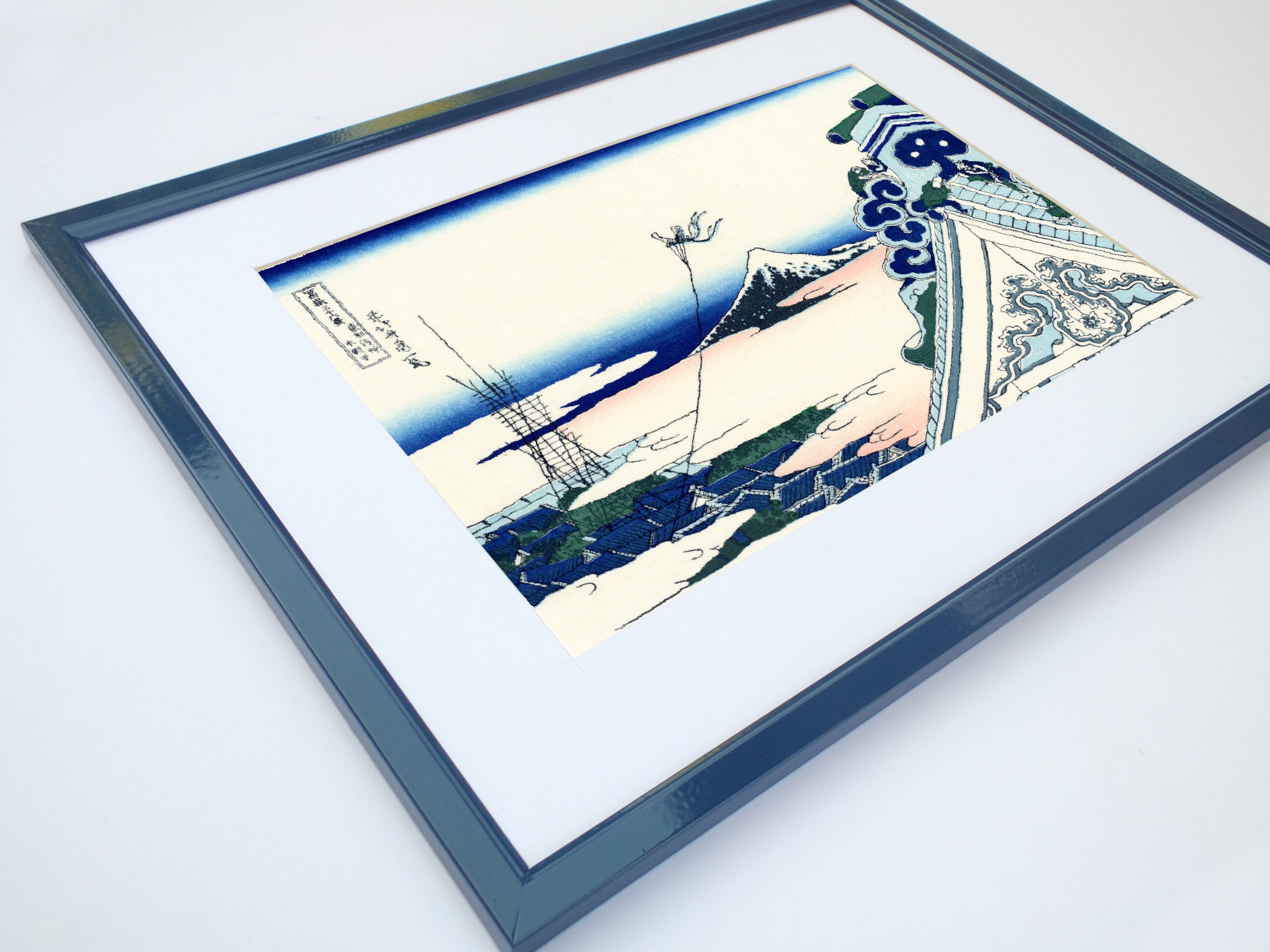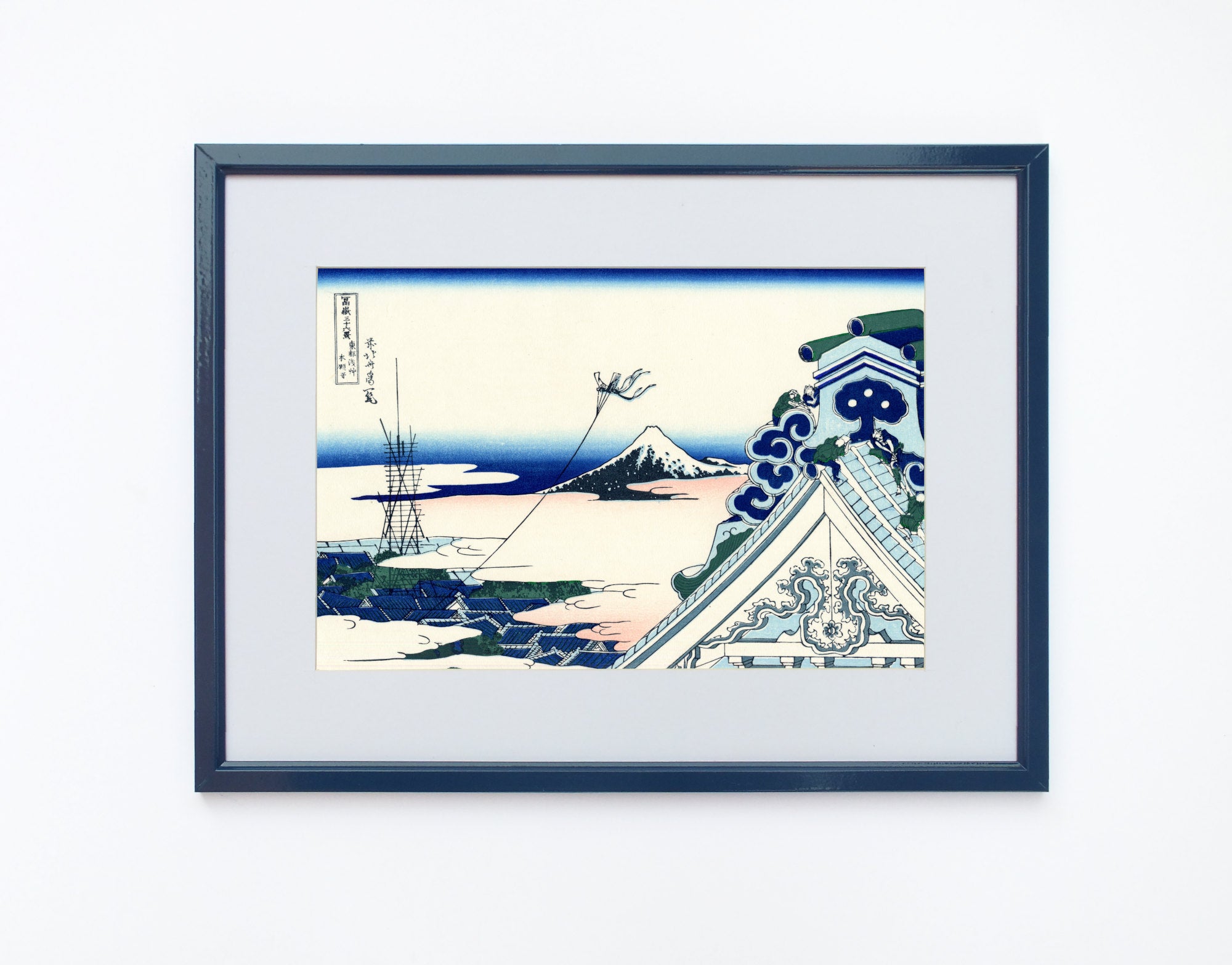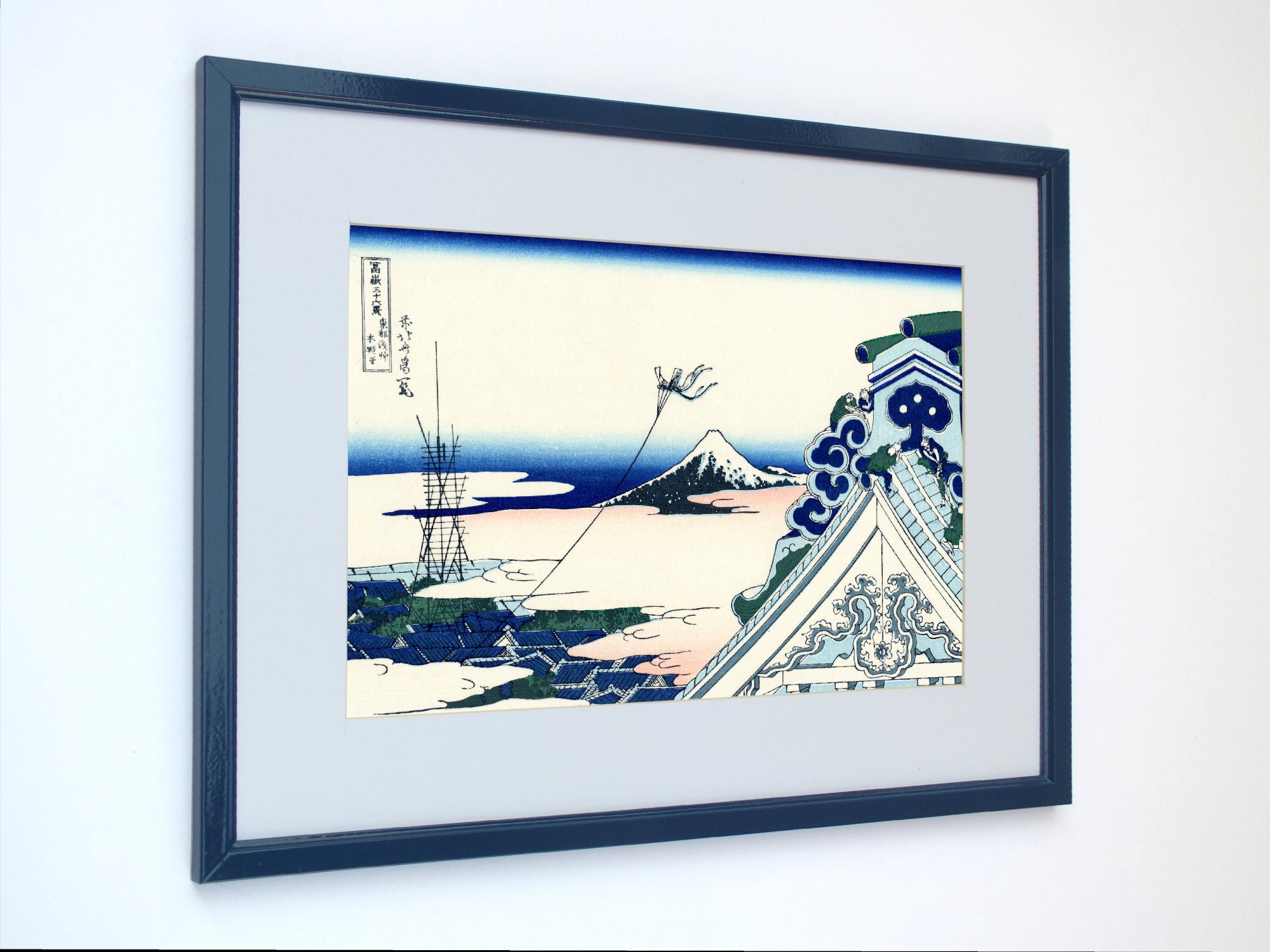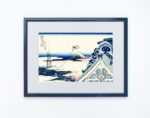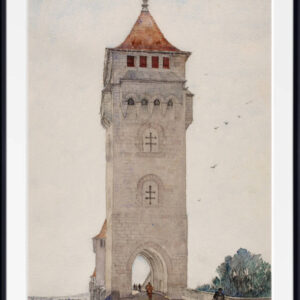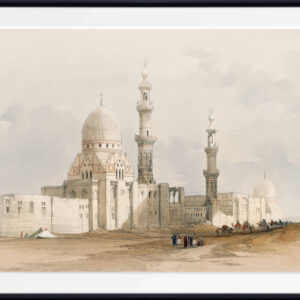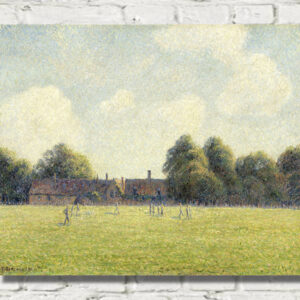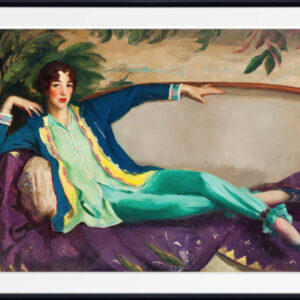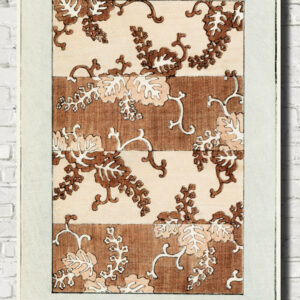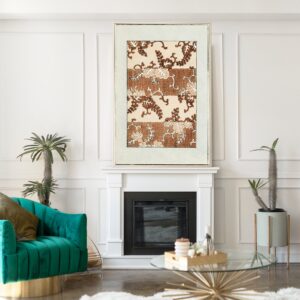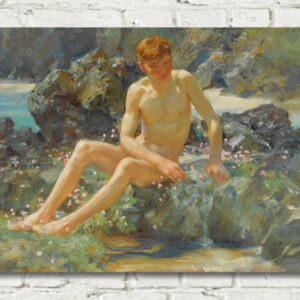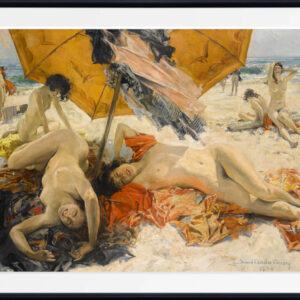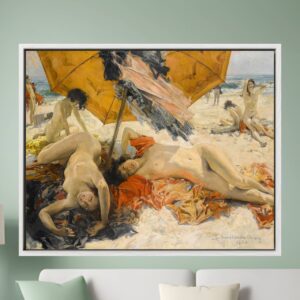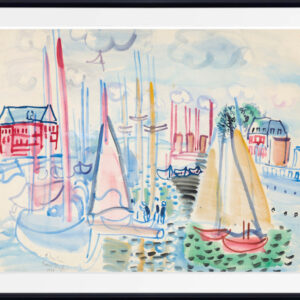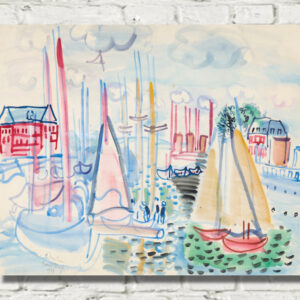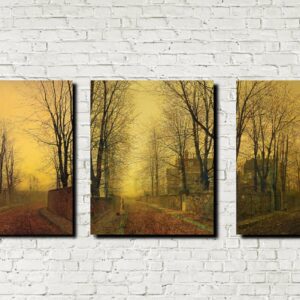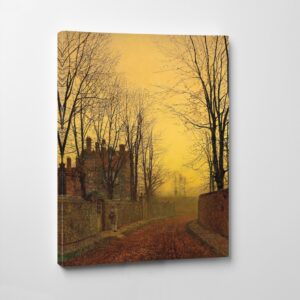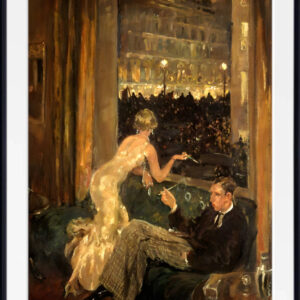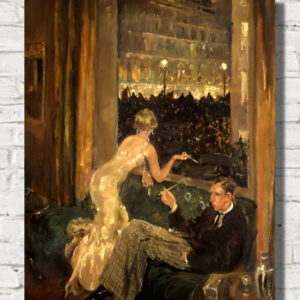36 Views of Mount Fuji, Asakusa Honganji Temple, Katsushika Hokusai, Japanese Print
Asakusa was the most populous district in Edo in Hokusai’s time. Its streets were crowded with stores where busy merchants and craftsmen lived and vigorously plied their trades. One of the district’s landmarks was the enormous Asakusa Honganji Temple, built in 1657, which belonged to a branch of Kyoto Higashi Honganji, the headquarters of Buddhism’s Eastern School of the Pure Land (Jödo) sect. Begun in the Late Heian period (late eleventh century), the Pure Land sect quickly gained a large following. It had one simple, compassionate teaching – that enlightenment (salvation) could be attained not through the study of sutras or observation of complicated rituals, as required in other sects, but simply by sincerely calling Amida’s name. In the Edo period, this teaching spread, and Pure Land became the largest Buddhist sect, with large temples all over Japan. In this composition, Hokusai brought the temple building so close to the foreground that only the triangle of the roof’s pediment is visible. Looking down, one can observe the sea of roofs of smaller houses, over which decorative clouds float. Mount Fuji, above them, repeats the roof’s shape. Hokusai’s dramatic compositional scheme enlarges the temple roof to an enormous proportion, dwarfing houses and the mountain. On the temple’s steep roof, workmen are busy making repairs. Their exaggerated, precise postures are drawn from studies Hokusai made of form and movement, which culminated in the publication of his sketchbooks, the Manga. The towering structure at the left is a scaffold rising over a well excavation. A kite indicates that the season is winter, most likely New Year’s day. The windy days of winter are best for flying kites, the symbol of the new year. Pale pink in the cloud and the kite enlivens a monochromatic blue print. The key-block was printed in blue.
Katsushika Hokusai was a Japanese artist, ukiyo-e painter and printmaker of the Edo period. Born in Edo (now Tokyo), Hokusai is best known as author of the woodblock print series Thirty-six Views of Mount Fuji (富嶽三十六景 Fugaku Sanjūroku-kei, c. 1831) which includes the internationally iconic print, The Great Wave off Kanagawa.
Hokusai created the “Thirty-Six Views” both as a response to a domestic travel boom and as part of a personal obsession with Mount Fuji. It was this series, specifically The Great Wave print and Fine Wind, Clear Morning, that secured Hokusai’s fame both in Japan and overseas. As historian Richard Lane concludes, “Indeed, if there is one work that made Hokusai’s name, both in Japan and abroad, it must be this monumental print-series”. While Hokusai’s work prior to this series is certainly important, it was not until this series that he gained broad recognition.
All prints are made using archival art stocks and UV pigment inks to give up to 200 years life. Choose from unframed, framed and mounted and canvas panel options.

